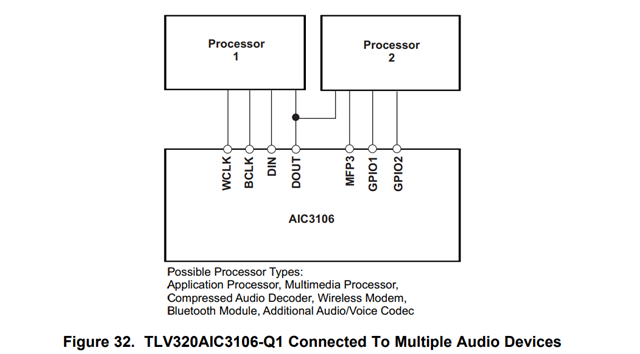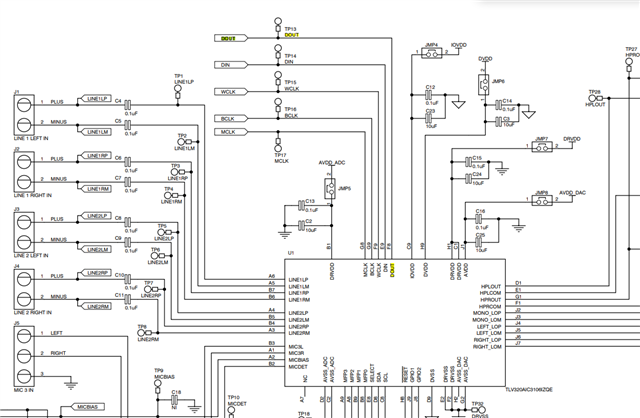Hello
If I plan to design a car audio hands-free device using the TLV320AIC3106-Q1 audio codec,
there will be two I2S audio sources (SOC and BT PCM) feeding into the audio codec. In the specification,
Figure 32. TLV320AIC3106-Q1 Connected To Multiple Audio Devices,
I found a similar application. I would like to inquire if there is a reference circuit design available for us to compare against.
In particular, for the connection between DOUT of Processor 1 and Processor 2, is it directly shorted on the circuit?
Sincerely,
Jerry




